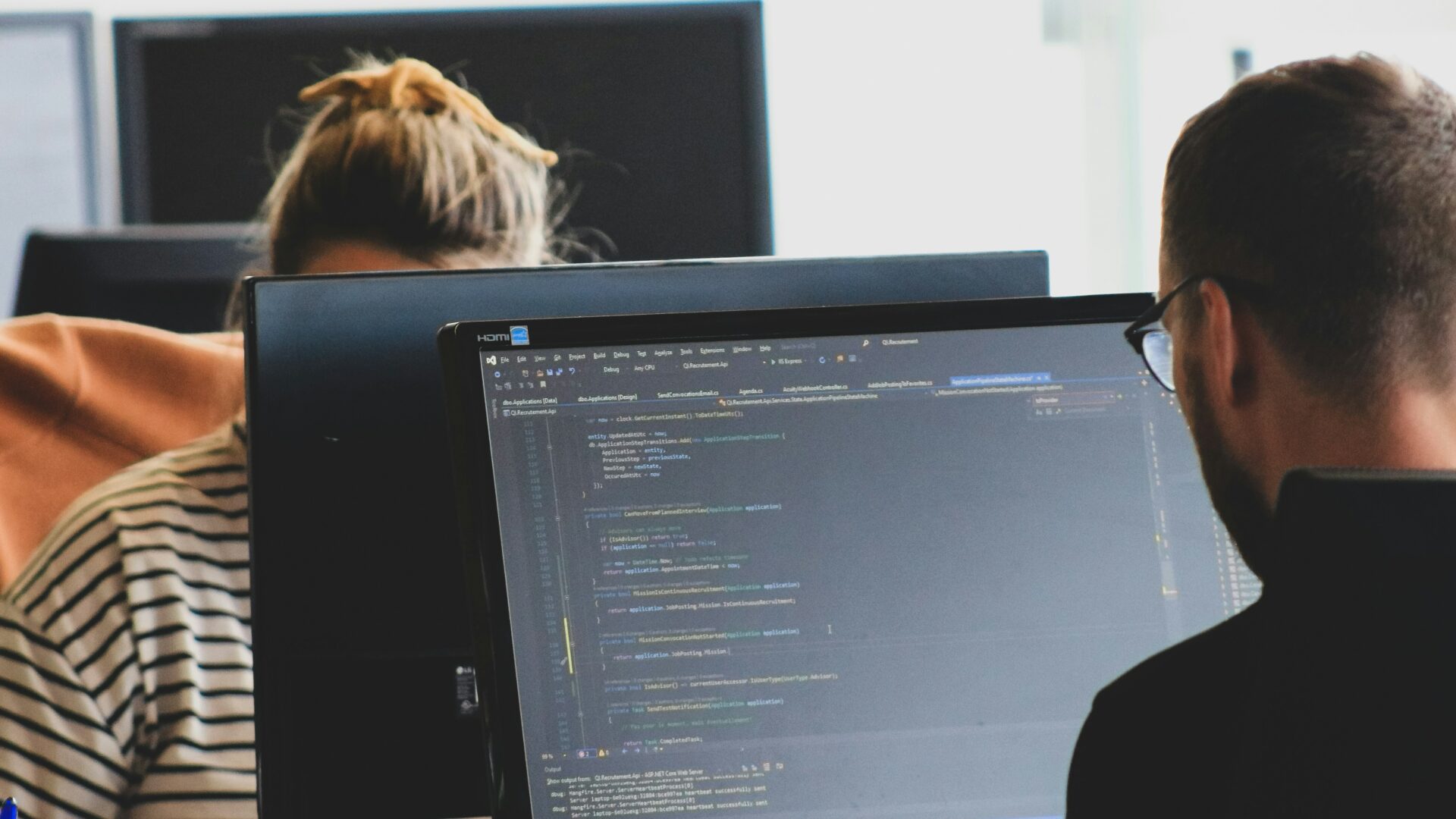
Roadmap for software users & software developers
Be smart about your intellectual property
When you think of technology, you often think of software. Think about all the software you have on your computer, as well as the apps on your phone and the way in which some products operate (e.g. GPS). Some companies develop their own software, either for sale or because it is an essential part of their product. Software is also protected by intellectual property. But to what do you need to pay attention to when you are using and developing software?
Step 1/5 First and foremost, is it possible to simply use any software?
Lots of companies use software to create their own product or to provide a service. Is this something you do? If so, then it's important that you purchase that software through recognised channels. That way, you can obtain an official licence for it and use the software without encountering any problems throughout the duration of the licence. Note: this doesn’t have to relate to complex things. Even text processor programs, photo editing programs or website template need a licence.
There is also open source software. This can be used for free, but you will need to check the terms and conditions, since some of them prohibit commercial use, for example.
Step 2/5 Who owns the IP rights for your software?
Did you develop the software yourself? If so, you should check carefully who holds the rights. Normally, the general rule is that copyright is granted to the person that creates the work. The exception to this rule, however, is if you write software for your employer. If this is the case, the property rights (part of the copyright) will automatically be held by the employer. If you create another copyrighted work, though, these property rights will not be automatically transferred to the employer.
Take care that you always properly arrange any transfer of copyright so that nothing is ambiguous! In fact, different standard rules exist for ‘ordinary copyrights’ and copyright that relates to software. Furthermore, these rules depend on the relationship, such as principal–contractor or employer–employee.
Tip! Make your software tangible, by linking it to a name and logo. You can then also protect this by copyright or a trademark. |
Has your custom software been written by an external party? If so, the rights will continue to belong to that external party. They will then decide how the software can be used, whether it will be free or licensed. This is why an agreement should be made well in advance about what you can do with the software and what the terms will be.
Step 3/5 How can you sell or lease your own software?
The software that you have written for a client or for your own company might also be of use to other people. This is why licenses exist. A license provides permission for the software to be used under certain conditions and for a specific monthly or annual fee. You should contact a solicitor so that a licence agreement can be set down in writing.
It’s also worth remembering that sometimes, it might be of value to offer your software for free in exchange for mentioning your name or that of your company. This might result in more business in the long run.
Step 4/5 What can you protect if you develop an app?
Fundamentally, all components that make up your app:
- software (such as source code, object code,… ) and preparatory material (by means of copyright);
- database (by means of database right);
- name and logo (by means of a trademark right);
- graphical interface (by means of copyright);
- audio, such as your soundtrack, jingle, or other sound bytes (by means of copyright)
Tip! The apps that are on your tablet or smartphone are software. In fact, this software also frequently make use of data that is received through your device. This can include photographs and locations. You must therefore ensure that you receive explicit permission from the device owner in order to use that data. This can be achieved by asking the user of your app to select a tick-box that contains a link to the general terms and conditions of use. |
Step 5/5 Can video games also be protected?
All of the component parts of a video game can be protected as well. The technical parts such as software and databases, but also the artistic components. This includes things like characters, the gaming environment, dialogue, music, name, logo...
A video game will often involve several parties collaborating together. One person will develop the script, someone else might work on the music, while other parties may create the graphics or distribute the game. You therefore need to carefully set down in writing which of the parties holds which IP rights.